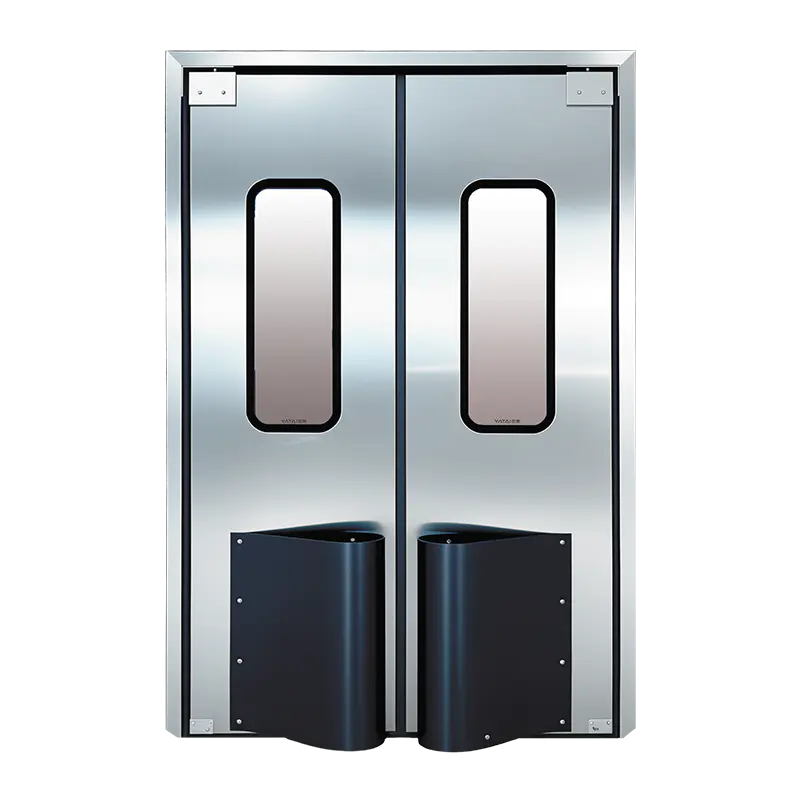There Specific Height or Placement Requirements for Cleanroom Windows to Avoid Cross-Contamination?
In the highly controlled environments of pharmaceutical, biotechnology, and microelectronics cleanrooms, every element is scrutinized for its potential impact on product quality. Walls, floors, HVAC systems, and personnel procedures are all designed with a single goal: to control contamination. But what about something as seemingly simple as a window? Are there specific rules governing their height and placement to prevent the disruption of delicate airflow patterns and the introduction of particles?
The short answer is yes. While international standards like ISO 14644 do not prescribe exact measurements for window placement, they establish critical performance criteria for air cleanliness and airflow. The design, height, and placement of windows are direct consequences of meeting these stringent requirements.
The Primary Goal: Preserving Laminar Airflow
The most critical factor in cleanroom contamination control is the management of airflow. In ISO Class 5 (Class 100) and cleaner environments, unidirectional (laminar) airflow is used. This means air moves in a constant, parallel stream at a uniform velocity from the ceiling (through HEPA or ULPA filters) to the floor return grilles.
Any protrusion or recess into this cleanroom envelope can create turbulence, disrupting the smooth, piston-like flow of air. Turbulent eddies can trap and recirculate particles, allowing them to settle on critical surfaces, equipment, or product. Therefore, the primary design rule for any cleanroom component, including windows, is to minimize disruption to the laminar airflow.
Key Placement Principles for Cleanroom Windows
Based on the overarching goal of preserving airflow, several placement principles emerge.
1. The Strategic Viewport: Observation vs. Process Monitoring
Not all windows serve the same purpose. Their placement is first determined by their function:
- Observation Windows: Placed in corridor walls or between a less-clean and a cleaner area, these windows allow supervisors and visitors to observe processes without entering the cleanroom. Their primary goal is to reduce personnel traffic, a major contamination source. Placement is typically at a standard standing eye level (approximately 1400-1600mm or 55-63 inches from the floor) for ergonomic viewing from the corridor side.
- Process Monitoring Windows: Located directly within the cleanroom’s process area, these are used by operators to monitor equipment. Their placement is dictated by the equipment itself, not human ergonomics. The window must be positioned to provide a clear line of sight to a critical control panel, readout, or process vessel.
2. The Critical Height Consideration: Avoiding the “Splash Zone”
This is one of the most direct answers to the title’s question. There is a specific height-related rule, but it’s more about vertical placement relative to activity than a fixed measurement.
Windows, particularly those inside the cleanroom, should be installed at a height that places them above the primary activity zone. In a seated operation, this might be just above desk height. In a standing operation, it should be above elbow level where active work is performed.
The reasoning is twofold:
- Avoiding Contamination Accumulation: Placing a window in a high-traffic area makes it a frequent contact point, leading to the accumulation of particles and microbes from gloves and sleeves.
- Preventing “Splash” Contamination: If a critical process is occurring near a window, an accidental spill or release of particles could directly contaminate the window frame and glazing. A recessed frame or a sloped sill can then act as a collection point for these contaminants. Placing the window away from this immediate zone of activity is a primary defensive measure.
3. Proximity to Critical Zones: The 3-Foot Rule
A common and sensible guideline, often called the “3-Foot Rule,” suggests that no penetrations—including windows—should be placed within 3 feet (approximately 1 meter) of a critical process zone, such as an open vial filling line or an exposed semiconductor wafer.
This buffer zone ensures that any potential leakage from the window seal (however minimal) or turbulence generated by its presence does not directly impact the most vulnerable part of the operation. The window’s frame and seal represent a potential breach in the cleanroom envelope, and maintaining a safe distance is a fundamental risk mitigation strategy.

Design and Material Specifications for Contamination Control
The physical design of the window is as important as its placement. A poorly designed window in the perfect location is still a contamination risk.
- Flush-Mounted Installation: The ideal cleanroom window is installed completely flush with the interior cleanroom wall. This creates a smooth, uninterrupted surface with no ledges, lips, or recesses where particles can accumulate and where cleaning is difficult. Any protrusion greater than a few millimeters can create turbulence.
- Coved or Canted Sills: If a sill is necessary, it should be coved (rounded) at the junction with the wall or canted (sloped) to prevent horizontal surfaces. A flat sill acts as a shelf for dust, while a sloped one encourages particles to slide off and be carried away by the airflow.
- Seamless and Non-Porous Materials: The frame material, typically anodized aluminum or stainless steel, must be non-shedding and non-porous. All joints and corners should be seamlessly welded or sealed with a high-grade, cleanroom-compatible silicone that is resistant to cleaning agents.
- Double or Triple Glazing: The glass itself is a critical component. It must be safety glass (usually tempered or laminated) and is often double-glazed. The airspace between the panes acts as a thermal break to prevent condensation, which could lead to microbial growth. The panes are hermetically sealed, and the entire assembly must be pressure-equalized to prevent stress on the seals.
Conclusion: A Holistic Approach to Integration
In conclusion, while you will not find a universal regulation stating “all cleanroom windows must be X inches from the floor,” there are very specific and logical requirements derived from the fundamental physics of contamination control.
The effective placement and design of a cleanroom window are a exercise in risk assessment. It involves:
- Preserving Laminar Flow: By ensuring a flush mount and avoiding turbulent zones.
- Minimizing Interference: By keeping windows away from critical process areas and high-activity zones.
- Enabling Effective Cleaning: By specifying smooth, seamless, and coved surfaces with no particle traps.
Ultimately, a cleanroom windows are not just a viewport; it is an integral part of the clean barrier. Its success is measured by how invisibly it performs its function—providing visibility without compromising the pristine environment it is built to protect. When designed and placed correctly, it becomes a testament to the cleanroom’s overall integrity, not a vulnerability.


 English
English Español
Español русский
русский عربى
عربى















